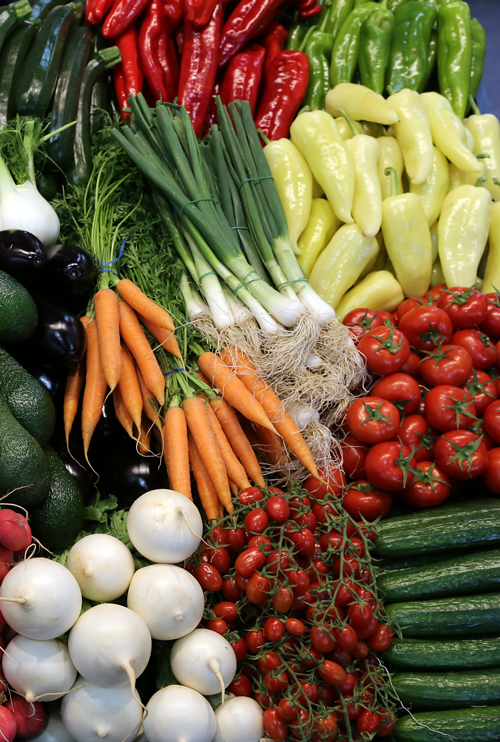China’s organic food market has been experiencing explosive growth, presenting both opportunities and challenges for global food brands. As the world’s most populous country embraces healthier and more sustainable eating habits, understanding the nuances of China’s organic certification process becomes crucial for international companies looking to tap into this lucrative market.
The Booming Chinese Organic Market
The Chinese organic food market is on a trajectory of remarkable growth. According to a report by The Business Research Company, the global organic food market is expected to grow from $279.19 billion in 2024 to $489.75 billion in 2028, at a compound annual growth rate (CAGR) of 15.1%. China, as a key player in this global market, is significantly contributing to this growth.
A study by the Research Institute of Organic Agriculture (FiBL) and IFOAM – Organics International revealed that China has the fourth-largest organic market globally, with retail sales of organic products reaching €8.1 billion in 2019. This rapid expansion is driven by increasing health consciousness among Chinese consumers, rising disposable incomes, and growing concerns about food safety.
Key Differences Between Chinese and International Organic Standards
Global food brands entering the Chinese market must navigate the unique landscape of China’s organic certification standards. While there are similarities with international standards, several key differences exist:
- Stricter Environmental Requirements: China’s organic standards place a higher emphasis on the environmental conditions of production areas, including soil and water quality.
- Labeling and Marketing Regulations: China has specific requirements for organic product labeling, which may differ from those in other countries.
- Certification Process: The certification process in China can be more complex and time-consuming compared to other markets, often requiring on-site inspections by Chinese certification bodies.
Challenges Faced by Global Brands
- Language and Cultural Barriers: Navigating the Chinese market requires understanding local languages and cultural nuances, which can be challenging for foreign brands.
- Stringent Environmental Quality Requirements: Meeting China’s strict environmental standards for organic production can be difficult, especially for brands used to different criteria in their home countries.
- Complex Supply Chain Management: Ensuring traceability and maintaining organic integrity throughout the supply chain in China can be more challenging due to the country’s vast size and diverse agricultural landscape.
- Consumer Trust: Building trust with Chinese consumers, who have historically been skeptical of food safety, requires extra effort and transparency from global brands.
Strategies for Success in the Chinese Organic Market
- Develop a China-Specific Organic Strategy:
- Tailor your organic products to meet local tastes and preferences.
- Invest in understanding the unique aspects of China’s organic certification process.
- Build Strong Local Partnerships:
- Collaborate with local organic farms and producers to ensure compliance with Chinese standards.
- Partner with Chinese certification bodies to navigate the certification process more smoothly.
- Invest in Education and Transparency:
- Educate Chinese consumers about your brand’s organic practices and certifications.
- Implement transparent supply chain practices to build trust.
- Leverage E-commerce and Social Media:
- Utilize popular Chinese e-commerce platforms like Tmall and JD.com to reach organic-conscious consumers.
- Engage with consumers through Chinese social media platforms such as WeChat and Weibo to build brand awareness and trust.
- Adapt Packaging and Marketing:
- Design packaging that appeals to Chinese consumers while complying with local organic labeling requirements.
- Develop marketing campaigns that resonate with Chinese values and health concerns.
Case Study: Successful Entry of a Global Organic Brand
While specific brand names are not mentioned to maintain neutrality, there have been success stories of international organic brands entering the Chinese market. One notable example is a European organic dairy company that successfully entered China by:
- Partnering with a local Chinese dairy producer to ensure compliance with local organic standards.
- Investing in a robust traceability system that allowed Chinese consumers to track the product from farm to table.
- Launching a comprehensive WeChat campaign to educate consumers about their organic practices and the benefits of organic dairy.
- Adapting their packaging to include QR codes that linked to detailed product information and certification details.
This strategy resulted in the brand capturing a significant market share in the premium organic dairy segment within three years of entry.
The Future of Organic Trade Between China and the Global Market
The future of organic trade between China and the global market looks promising, with several key trends emerging:
- Potential for Mutual Recognition Agreements: There’s growing discussion about establishing mutual recognition agreements between China and other major organic markets, which could streamline the certification process for international brands.
- Emerging Consumer Preferences: Chinese consumers are increasingly seeking out international organic brands, perceiving them as high-quality and trustworthy.
- E-commerce Growth: The rapid growth of cross-border e-commerce in China is making it easier for international organic brands to reach Chinese consumers directly.
- Opportunities for Collaboration: There’s increasing potential for collaboration between Chinese and international organic producers, particularly in areas like research and development of organic farming techniques.
Conclusion
The Chinese organic food market presents a significant opportunity for global food brands, but success requires a deep understanding of the local certification process, consumer preferences, and market dynamics. By developing China-specific strategies, building strong local partnerships, and investing in transparency and education, international organic brands can successfully navigate the challenges and capitalize on the immense potential of the Chinese organic market.
As the organic food sector continues to grow globally, China’s role as both a major consumer and producer of organic products is set to increase. Global brands that can successfully adapt to the unique requirements of the Chinese market will be well-positioned to benefit from this growth and contribute to the development of a more sustainable and health-conscious food system in China and beyond.
Ready to unlock the potential of China’s organic market? Contact our expert consultants today for tailored strategies to navigate certification challenges and boost your brand’s success in this thriving market.
